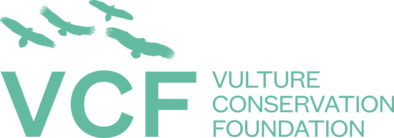© Oliver Burton
| Project period | 2014-present |
|---|---|
| Project area | European Union |
| Target species | Cinereous Vulture, Egyptian Vulture, Griffon Vulture, Bearded Vulture |
Ever since the legal marketing of Diclofenac in Italy and Spain in late 2013, the Vulture Conservation Foundation (VCF) has researched the situation, established the current state of play, and promoted the building of a coalition of like-minded organisations to fight this threat. The VCF, together with the several other organisations have been advocating for the ban of veterinary drug Diclofenac in Europe, which is extremely lethal to vultures and is responsible for a major population decline of several vulture species in the Indian subcontinent.
Vultures may be exposed to the drug by feeding on the carcasses of animals, which have previously been treated with this veterinary drug. Its pernicious effect on vultures has been extensively documented on the Indian subcontinent, where the presence of diclofenac in only 1% of the carcasses of abandoned cows in the field led to the near extinction, 95-99%, of Gyps vultures in 20 years. Following this outcome, the veterinary drug has been banned from India, Nepal, Bangladesh and Pakistan, only to reappear legally in Europe. This posed a significant threat to Europe’s vultures whose populations have been steadily recovering following considerable investment by the EU, national governments and organisations like the VCF.
The campaign advocates for the ban of this harmful drug to opt for the use of alternatives available to vet Diclofenac that are safe before it is too late for Europe’s vultures.
LEARN ABOUT THE TARGET SPECIES
DICLONEFAC IN EUROPE TIMELINE
| 2009 | Approved in Italy (Reuflogin) |
|---|---|
| 2013 | Approved in Spain (Diclovet & Dolofenac) |
| Dec 2013 | VCF informed |
| Jan 2014 | VCF and other conservation organisations write and meet EU Commission and ask for banning of Diclofenac |
| Mar 2014 | VCF and others contact FATRO and asks for voluntary withdrawal of the market – refused |
| 2014 | VCF and others campaign and collect 50,000 signatures in support of ban via online petition. The IUCN, CMS, WCS, EAZA, SCB and OIE support campaign |
| Aug 2014 | EU Commission asks the European Medicine Agency (EMA) for scientific opinion |
| Oct-Nov 2014 | VCF contributes to public consultation and hearing |
| Dec 2014 | EMA decision |
EMA DECISION
The EMA was of the opinion that additional risk management measures are needed and efforts should focus on determining the most suitable and effective ones to ensure that contaminated carcasses do not end up in the food chain of vultures and other necrophagous birds.
| Feb 2015 | EU Commission decides, after consulting with member states (MS) NOT to ban the drug, and asked MS to develop and submit mitigation plans |
|---|---|
| Jun 2015 | National action plans submitted to the EU |
NATIONAL MITIGATION ACTION PLANS
- Information to veterinarians – BG, CZ, LI, PL, ES, SE, IT
- Warnings in the product literature – BG, CZ, EE, IT, ES, SE, IT
- Changes in the administration pattern of the VMP – BG, CZ, EE
- Changes in the food chain information – PT, IT
- Increase controls in farms intentionally leaving dead animals in the field – PT, IT
- Accompanying of document for by-products – PT
- Sampling scheme – HR, CY, ES
- Withdraw diclofenac products from the EU market – AT, SE
| Ongoing | The VCF continues to work with vets, advocate for the ban and research the situation |
|---|
The campaign to Ban Vet Diclofenac in Europe was coordinated by the Vulture Conservation Foundation, BirdLife International, SPEA, SEO Birdlife and WWF.








